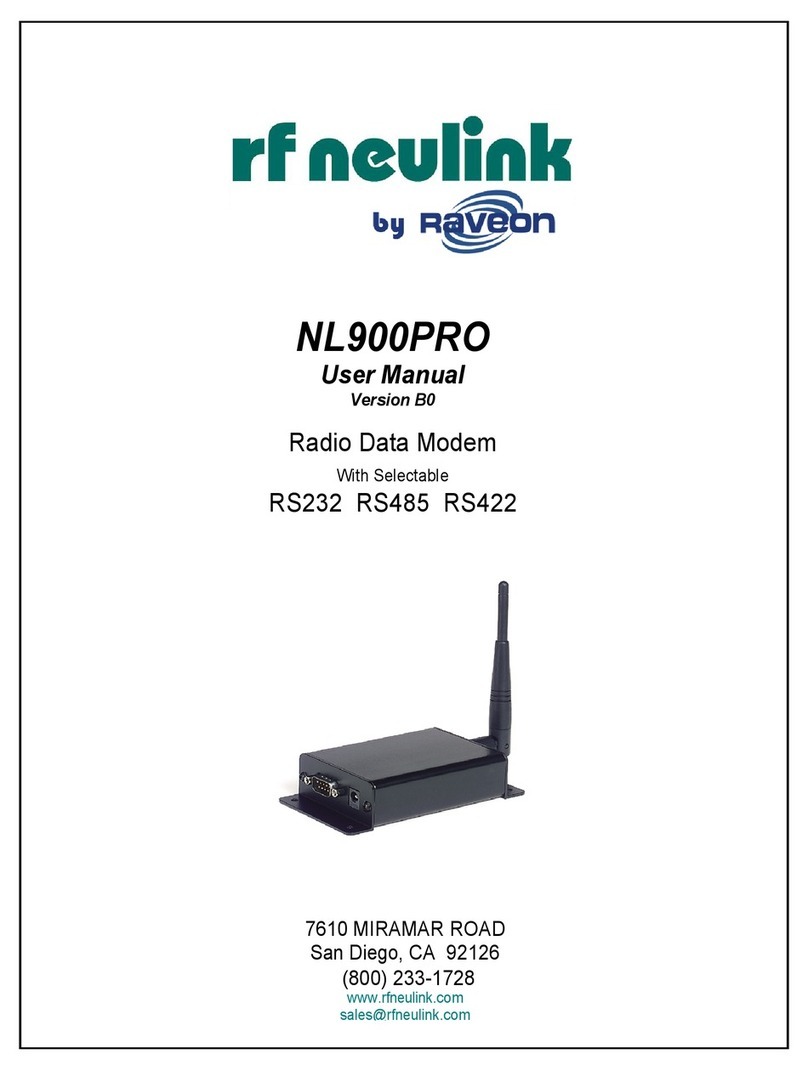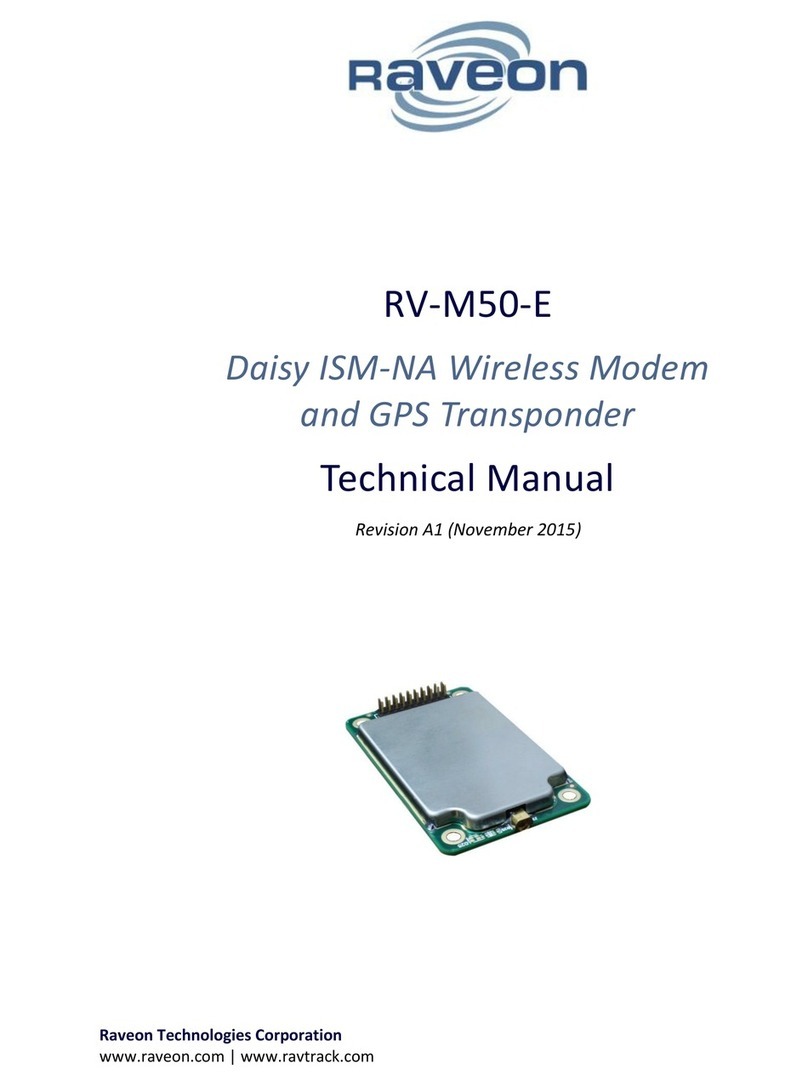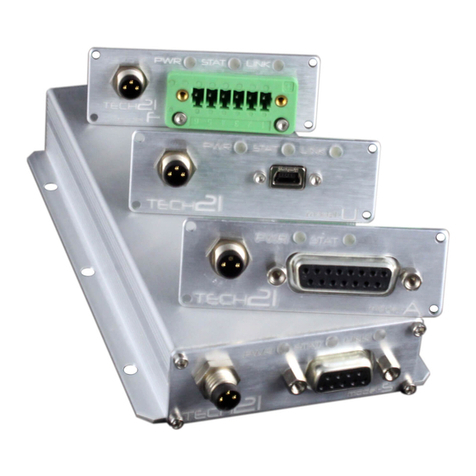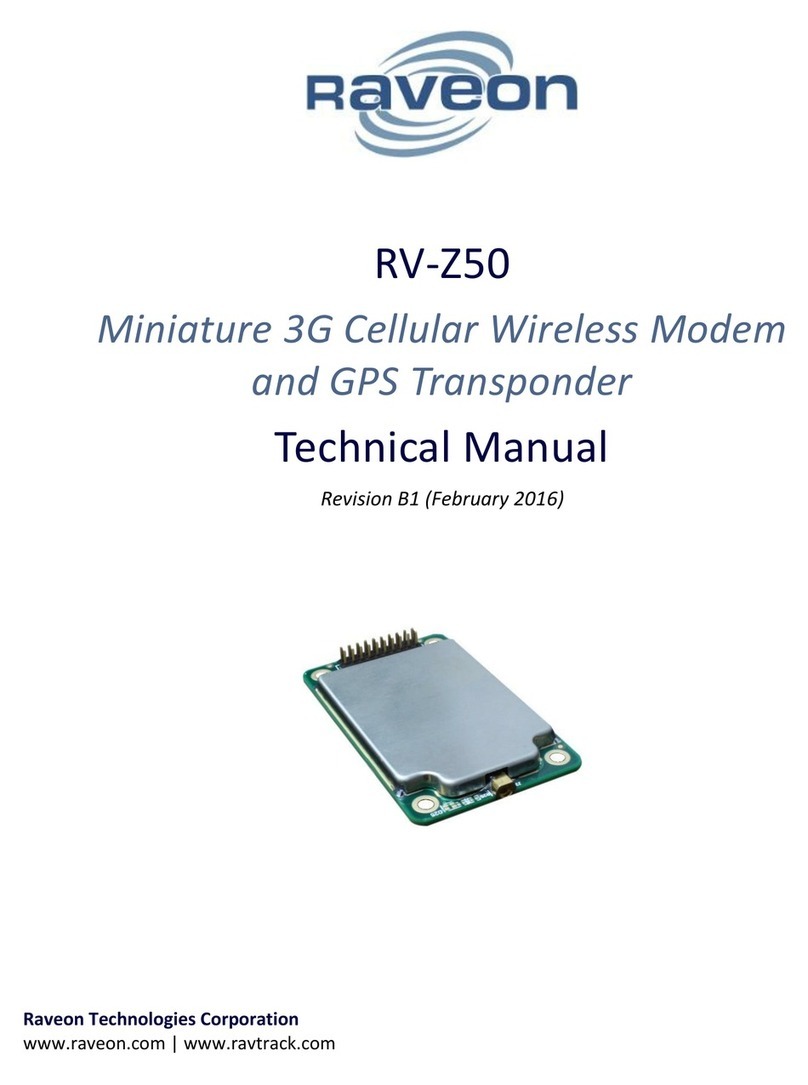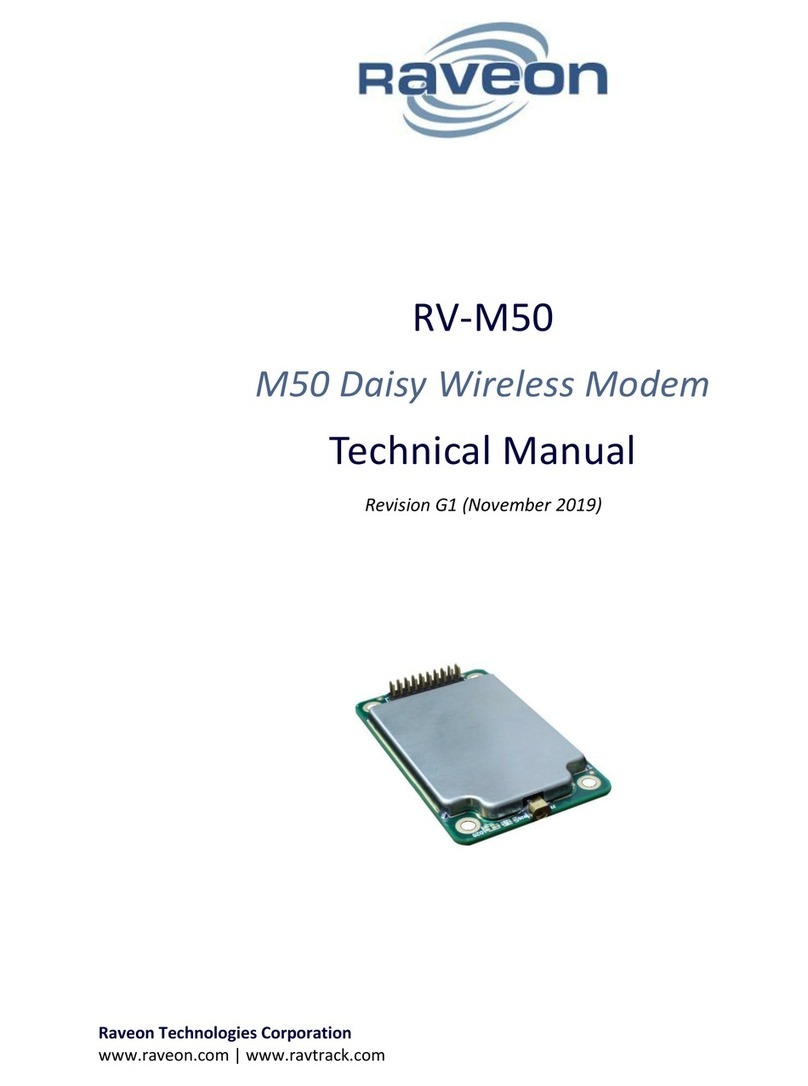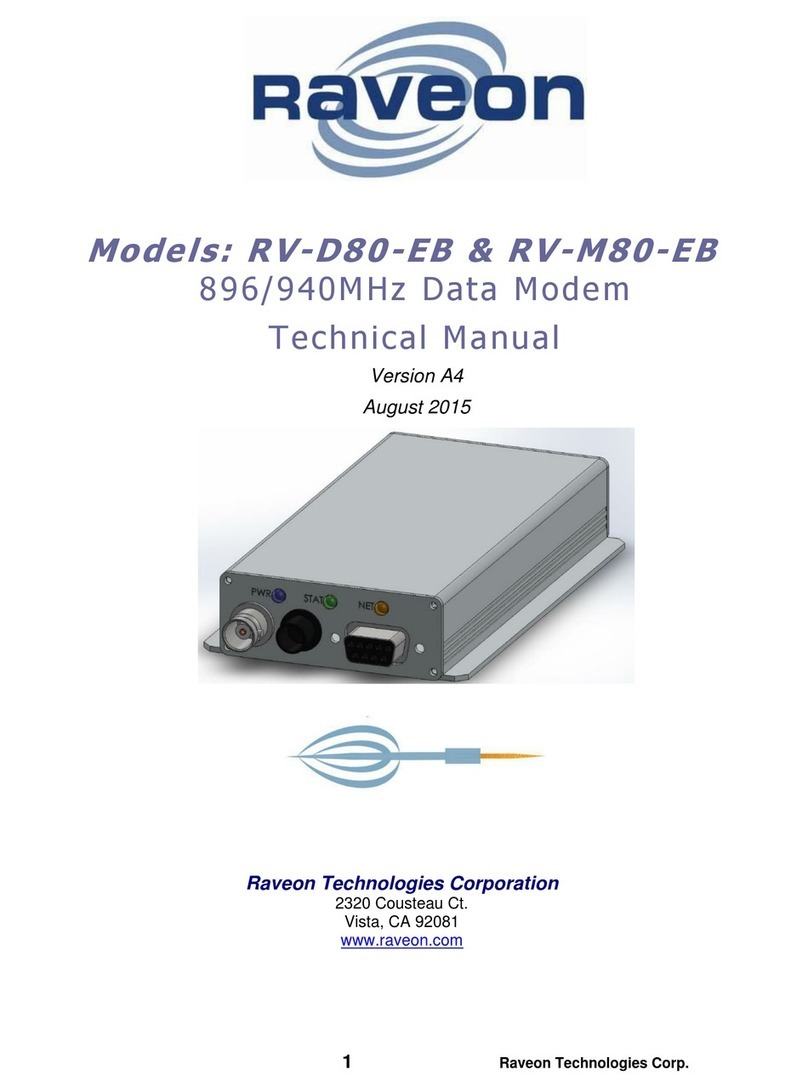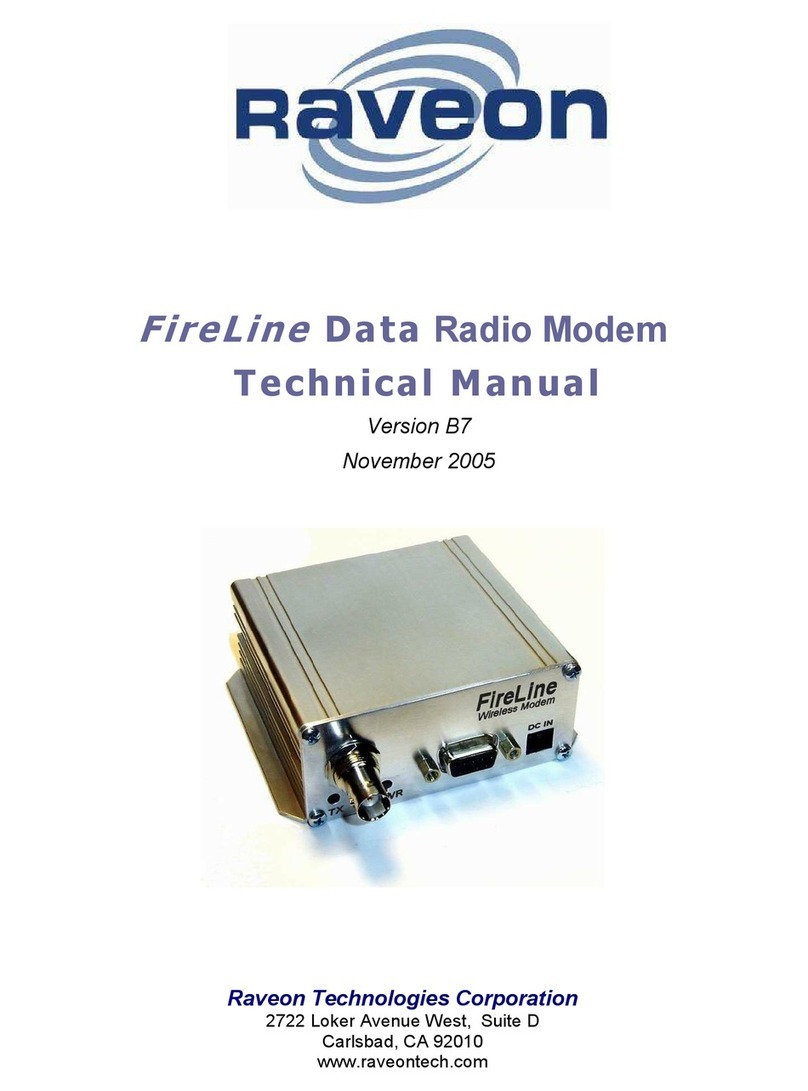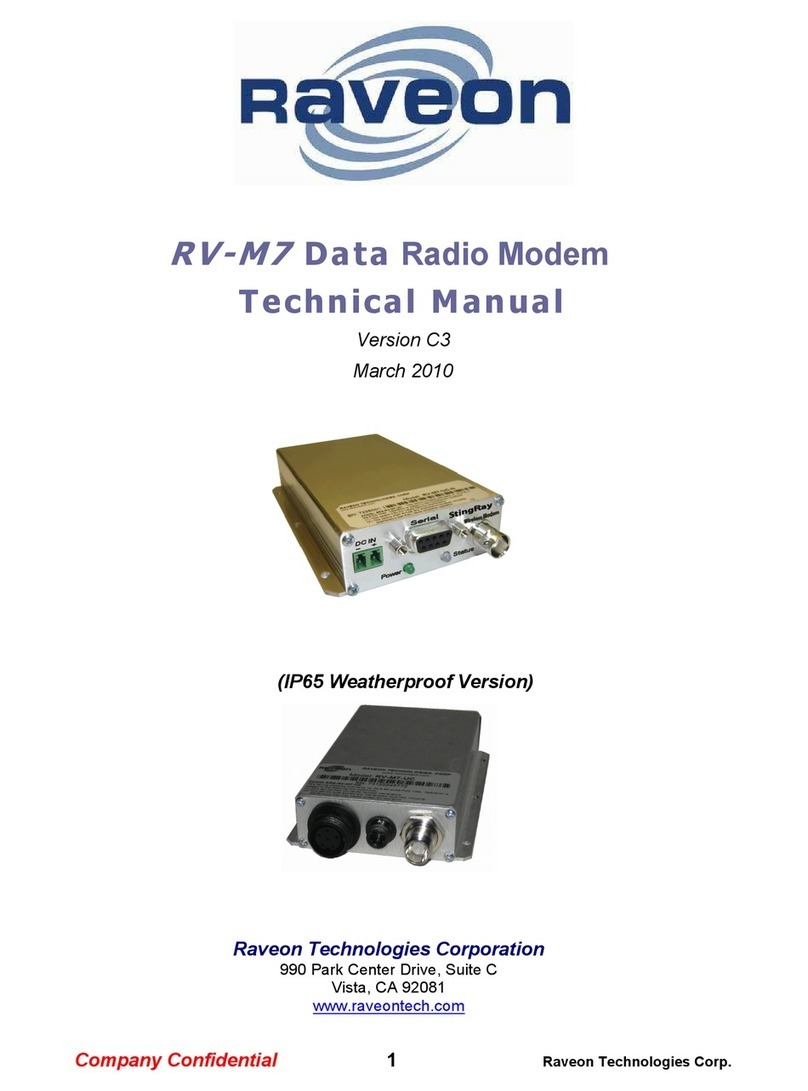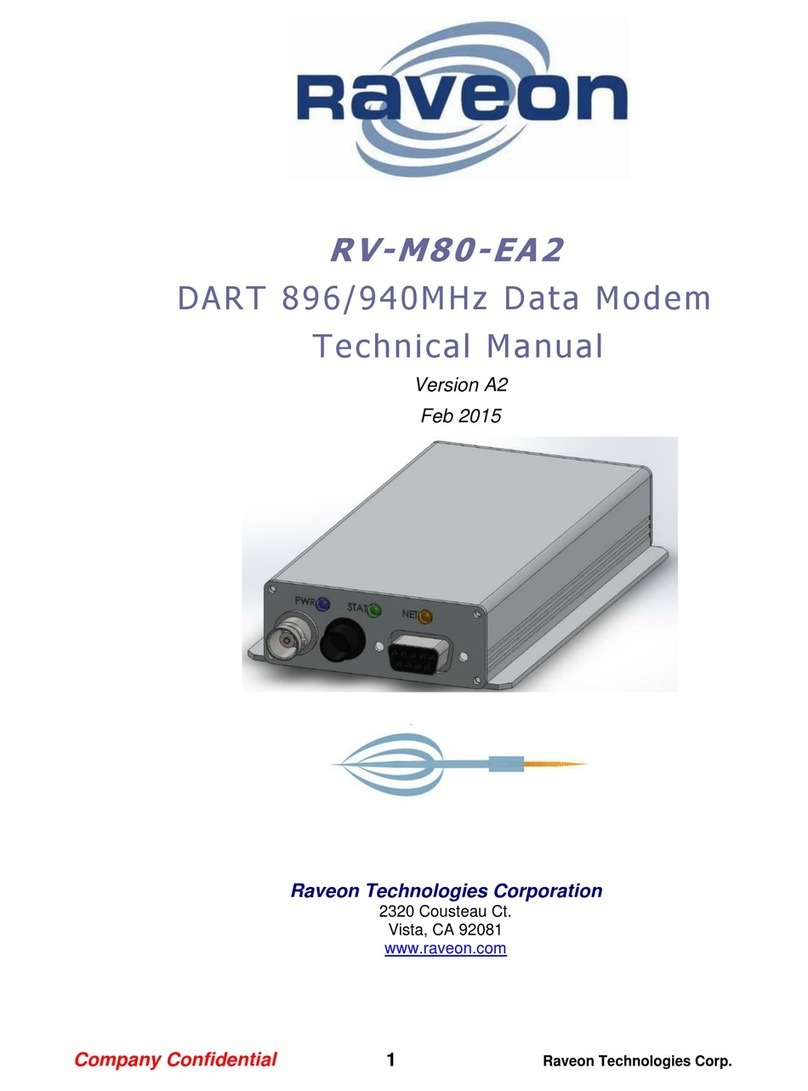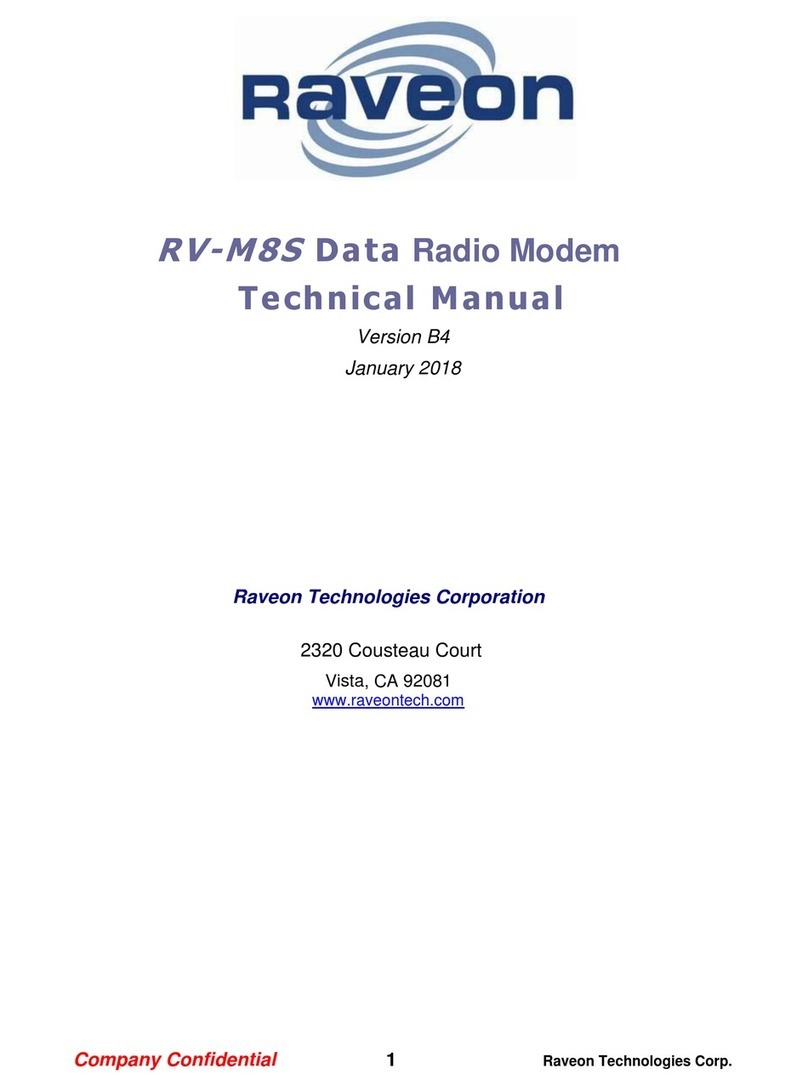
Company Confidential 2Raveon Technologies Corp.
Table of Contents
1. General Information about the RV-M8-UC ....................................................3
1.1. Congratulations!.............................................................................................................................3
1.2. NOTICE.........................................................................................................................................3
1.3. Safety / Warning Information .........................................................................................................3
1.4. Part 15 Note:...................................................................................Error! Bookmark not defined.
2. Overview .......................................................................................................5
2.1. Features.........................................................................................................................................5
2.2. Firmware Updating ........................................................................................................................6
2.3. General..........................................................................................................................................7
2.4. Transmitter Specifications (RV-M8-UC -xx)................................................................................... 7
2.5. Receiver Specifications .................................................................................................................7
2.6. Interface Specifications..................................................................................................................7
3. Electrical Inputs and Outputs.........................................................................9
3.1. RS-232/EIA232 Serial I/O Connector ............................................................................................9
3.2. GPS (-GX option)......................................................................................................................... 10
4. User Serial Port Commands........................................................................11
4.1. Overview......................................................................................................................................11
4.2. Command Mode.......................................................................................................................... 11
4.3. Setting a Parameter.....................................................................................................................12
4.4. Reading a Parameter................................................................................................................... 12
4.5. CONFIG Button ...........................................................................................................................12
4.6. Exiting the Command Mode......................................................................................................... 13
5. Command Mode Commands.......................................................................14
5.1. General Common Commands.....................................................................................................14
5.2. Data Modem Mode Related Commands...................................................................................... 16
5.3. DART Related Commands ..........................................................................................................16
5.4. GPS Related Commands............................................................................................................. 17
5.5. Diagnostic Related Commands ...................................................................................................17
5.6. Factory Default Settings...............................................................................................................17
(DART Data Transceiver) .................................................................................................................... 17
6. Programming Channels and Frequencies...................................................18
6.1. Initializing a new RV-M8-UC to factory defaults.......................................................................... 18
7. Data Transmission.......................................................................................19
Serial Port Baud Rate.......................................................................................................................... 19
8. Debug Related Commands .........................................................................19
9. Diagnostic Provisions..................................................................................21
9.1. Overview of Diagnostics ..............................................................................................................21
9.2. Reading the Diagnostic Information.............................................................................................21
9.3. Status and Statistics Command................................................................................................... 21
10. Tune-up and Alignment ............................................................................22
10.1. Periodic Calibration...................................................................................................................... 22
10.2. Calibration Commands ................................................................................................................ 22
10.3. Center Frequency........................................................................................................................23
10.4. TX Deviation................................................................................................................................ 23
10.5. TX Modulation Balance................................................................................................................ 23
11. Mechanical................................................................................................25
11.1. DC Input....................................................................................................................................... 25
